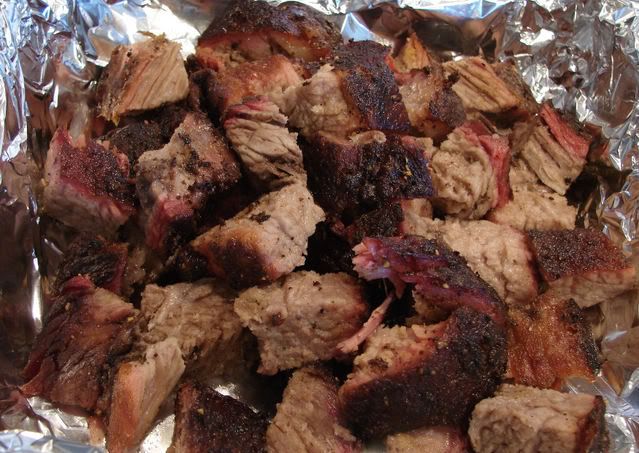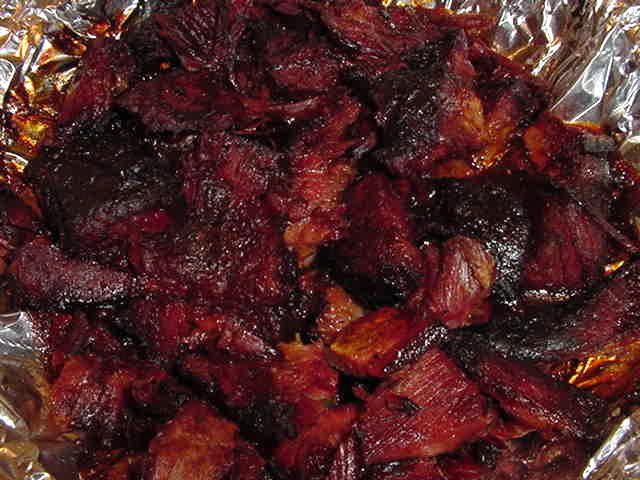BEEF - Burnt Ends

One of the most popular cuts for barbecued beef is brisket. Brisket became popular in the 1950’s but the quality was nowhere close to today’s brisket. Briskets of yesteryear were very fatty and did not have the consistent engineered quality, size and flavor of modern day beef. After slicing, pit bosses would have a lot of trimmings that were not actually serving grade. These could be the first cuts on the thin end of the flat or some of the fattier cuts from the point. All these pieces were saved and sometime during the week they were re-seasoned and cooked until very tender and served as a “Burnt Ends Special”. They are also known as tips, burnt tips and brownies. Burnt ends became so popular, many joints starting saving all their points for burnt ends and some places started cooking extra briskets specifically for this dish. They are in such high demand around Kansas City and in Texas; many places have them as a daily item on the menu. Depending on locale, burnt ends can be served up dry with sauce on the table or they can be reduced in sauce before serving.
Using only the point makes a wonderful product, if you want to add your cutting board scraps, that is fine too. It's perfectly okay to use as much of the flat as you want in your burnt ends. It’s up to you. Here is how to make this old time favorite.
When you are preparing a whole brisket for cooking you can separate the point and the flat before cooking, or you can leave the brisket whole. If you choose to cook the whole brisket, wait until the flat is ready then separate the point from the flat, but don't get in a hurry to cut off that point. If you do, this may allow valuable moisture in the flat to escape. Generally, letting the brisket rest for 30 minutes or so before separating the point from the flat is a good idea. Locate the natural seam between the two muscles and get a visual on how they will come apart. TIP: You may not need to actually "cut" the point off. Try using the backside of a knife or even your hand for a more "natural separation" . With a little encouragement and care, the muscles sometimes will slide apart as there is a layer of fat between them. I go out of my way to separate the point this way because I will wrap my flat in foil and hold in a cooler for at least 4 hours.
The next step is to re-season the point with your favorite rub and return it to your smoker for several hours at around 225° at the grate. Following this second cook, cube the point, removing large areas of fat. Burnt ends can be served up dry with some sauce at the table.
A second option is to add your favorite sauce and put the cubes back in the pit in an open aluminum pan. (if you are adding other scraps or cubes from the flat, now is the time) Allow the sauce to cook down and thicken. Stir several times. Add additional rub if needed. Sample often to monitor tenderness and flavor as tomato based sauces will take smoke easily. Cover if they are becoming too smokey.

TIP: Freeze several cooked points and make a big batch of burnt ends. They are good to take to parties or into work as they reheat well especially in a microwave.
